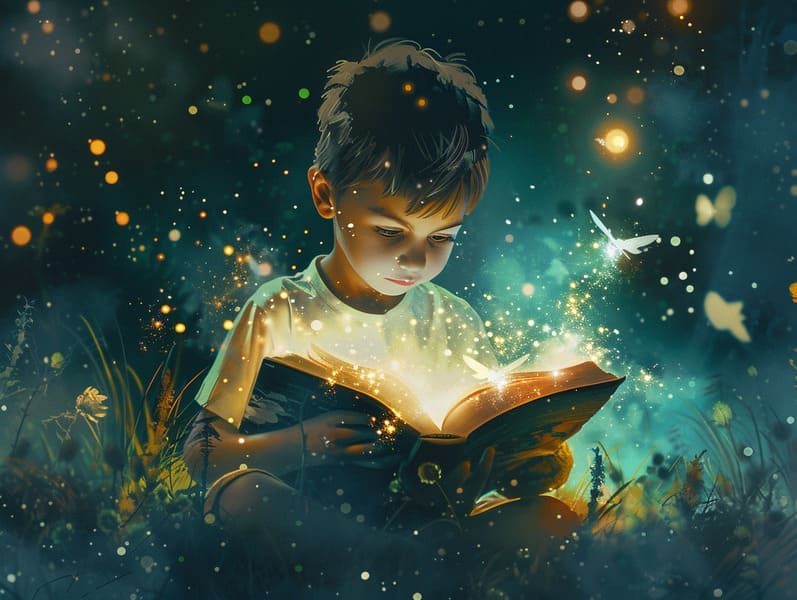Delving into the Background of Vintage Fairy Tales with Their Unceasing Charm.
Delving into the Background of Vintage Fairy Tales with Their Unceasing Charm.
Blog Article

Vintage fairy tales have old origins. These narratives have been spoken from one generation to the next long before they were ever documented. They came from a variety of cultures, including Middle Eastern traditions. They were initially narrated among older generations, often carrying themes and messages concerning the societal norms and beliefs of the time.
The renowned Brothers Grimm, the two Grimm brothers, were among the first to compile and release many of these beloved narratives. Their compilation, "Grimm's Fables," included classics like "The Little Glass Slipper," "The Story of Hansel and Gretel," and "Schneewittchen," which have since become pillars in the world of traditional fairy tales. Similarly, H. C. Andersen's fantastical fairy tales, such as "The Mermaid's Tale," and "The Story of the Ugly Duckling," have enchanted hearts worldwide, guaranteeing their place in the pantheon of iconic fairy tales.
Despite being ancient, these tales remain as pertinent as ever, especially as kids' bedtime tales. These magical stories are now available in various formats, including artistically illustrated books, magical animations, and online fairy tales.
Their unwavering allure can be attributed to several enchanting factors:
Crucial Morals: Ancient fairy tales often offer important moral lessons. Tales like "The Shepherd Boy and the Wolf" teach the value of honesty, while "The Tortoise and the Hare" highlight the merits of steadfastness and meekness. These tales offer children clear distinctions between moral and immoral, developing their moral compass in a tender yet lasting way.
Warmth and Understanding: Ancient fairy tales frequently present figures facing tests and troubles, inciting listeners to resonate with their struggles and boost their triumphs. For instance, "The Story of Beauty and the Beast" highlights the merit of seeing beyond looks to appreciate the real character of a person, building compassion and appreciation.
Cultural Knowledge: Many timeless fairy tales are interwoven with the cultural contexts from which they bloomed. Learning from these narratives can provide informative snapshots into different historical contexts, enhancing a sense of world awareness and respect.
Inventiveness and Fantasy: The supernatural elements in fairy tales—magic wands—unleash children’s creative thoughts. These narratives lead readers to enchanted realms, promoting inventive thinking and a sense of wonder that remains a lifetime.
Timeless fairy tales are not only alluring but also teaching. They serve as spellbinding tools in nurturing various mind and heart abilities in the young. When traditional fairy tales are recited, they develop language development by teaching new linguistic elements and elaborate sentence structures. This practice also nurtures auditory perception and mindfulness, as children keep up with the story, eager to see what happens next.
Furthermore, conversing about the themes and characters of ancient fairy tales can cultivate problem-solving abilities and cognitive skills. Young ones are educated to pinpoint patterns, forecast, and grasp cause and effect. These analyses also benefit the young reveal their thoughts and feelings, adding to their emotional intelligence.
In today’s high-tech era, the accessibility of online fairy tales has made these fairy tales more reachable than ever. Websites and digital apps feature comprehensive collections of children's fairy tales that can be browsed or listened on anytime, anywhere. Fairy tales voiced are particularly prevalent, extending an interactive method for children to experience these fantastical tales. Audiobooks and read-to-me stories guide characters and settings to life, often complemented by enchanting background sounds and tunes that amplify the tale journey.
The lasting allure of ancient fairy tales lies in their ability to transform to modern days while keeping hold of their core values. Contemporary reinterpretations of these stories often feature more different figures and modern settings, making them pertinent to today’s audience. However, the essential messages of braveness, humanity, and justness remain unchanged, continuing to influence readers of all ages.
Old fairy tales also offer a sense of reassurance and familiarity. They make available a well-structured narrative with a transparent beginning, middle, and end, often coming to a close with the wrap-up of conflicts and the triumph of morality over immorality. This assuredness can be reassuring for kids, providing a sense of unwaveringness in an inconstant world.
Ancient fairy tales continue to delight and instruct new generations, maintaining their wonder and applicability in modern society. As kids' bedtime tales, they put forth a perfect blend of charm and understanding, developing moral values, empathy, and creativity. The awesome site existence of internet fairy tales and the in demand status of fairy tales narrated certify that these timeless tales remain available to new generations.
By protecting and sharing these narratives, we continue to pay tribute to the rich tapestry of fables and cultural heritage. Whether you are reading a vividly illustrated book, exploring a web-based collection, or listening on an audiobook, the grandeur of old fairy tales is always within reach. These tales teach us of the persistent impact of narratives and its ability to draw us together across centuries and lands.
No matter if you are perusing a artistically illustrated book, browsing a cyber library, or playing an sound book, the elegance of classic fairy tales is always within reach.
These fairy tales point out of the unceasing impact of storytelling and its ability to link us across generations and cultures, forming a connection that captivates and teaches alike.